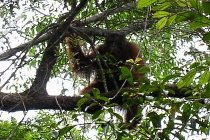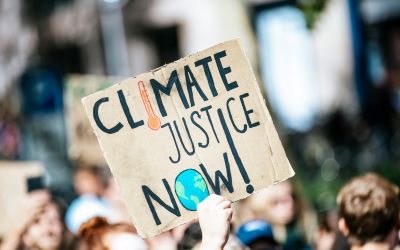Biodiversity could be at risk from conservation plans
Long-term biodiversity may be at risk from projects designed to cut carbon emissions from the forestry sector, scientists have advised.

Long-term biodiversity may be at risk from projects designed to cut carbon emissions from the forestry sector, scientists have advised. In a study published in the journal Carbon Balance and Management, on Tuesday, scientists from the University of Kent used examples from Indonesia to highlight ways in which emission reduction strategies could be detrimental to wildlife.
In the report, entitled "Biodiversity Conservation in the REDD", scientists stated that the bulk of the Reducing Emissions from Deforestation Degradation (REDD) scheme was targeted at peat land, where deforestation is high but biodiversity is low.
As non-peat land areas are not as high priority for REDD, it is feared that these areas, although high in biodiversity, could be used to set up palm oil or paper plantations.
The study reveals peat forests harbour fewer bat species and lower densities of birds and several keystone terrestrial and arboreal vertebrates. It also shows that biodiversity levels in peat swamps were lower than those in lowland forests on mineral soils. Indonesia has received a $1 billion pledge from Norway for REDD, which forms a large chunk of the $4.5 billion pledged globally for the scheme.
The UN-designed REDD scheme aims to offer monetary incentives to developing nations that improve their forest protection to help alleviate climate change. At the 16th Conference of Parties (COP16) in Cancun, Mexico, REDD is expected to become an official policy.
"Biodiversity and forest carbon are correlated at a global scale but we show that this is not the case at sub-national levels in Indonesia," says Gary Paoli, Director of Business and Research Development at Daemeter Consulting – the company leading the study - speaking to the Jakarta Globe on 24 November. Based in Bogor, Indonesia, Daemeter specialises in promoting responsible management of forest and agricultural landscapes. "The highest carbon savings are not necessarily located in places with the highest levels of species diversity,' Paoli adds.
Paoli says it is important to take a wider look at areas requiring conservation. There may be areas not covered by REDD that contain large populations of threatened species. His argument is that REDD finance should be used not only for peat lands but also for areas of high biodiversity in Indonesia.
Whilst the REDD mechanism is still being drafted, Heru Prasetyo, Secretary of the Indonesian REDD task force, stressed the need for a balanced approach. "We don't want to be trapped [in a condition] where we manage to protect our peatlands with low biodiversity content but we ended up cutting down biodiversity with high values," he is quoted by Jakarta Globe as saying, on the 24 November. "We don't want that. So, the strategy needs to be balanced."
The REDD task force will prepare institutions for the implementation of the Indonesia-Norway agreement, but Prasetyo has other concerns too. "You need to remember that we're not just talking about REDD, but REDD Plus where we need to also consider the biodiversity values, sustainable forest management and carbon enhancement," Prasetyo says.
Prasetyo will know that aside from spawning life, forests provide a number of other services, including producing oxygen, absorbing carbon, preventing flooding, providing drinking water and food. They are also a habitat to millions of people, and to some are considered sacred places where biodiversity is important for survival.
On the islands of Borneo, the forest communities in Malinau identified 2,000 separate species of plants, 1,400 of which were used regularly, some of which could not be obtained elsewhere. Conservation needs to take into account not only saving the environment, but also the cost in terms of lost revenue from the logging industry.
Author: Leroy Robinson | Climate Action
Image: tajai | Flickr






